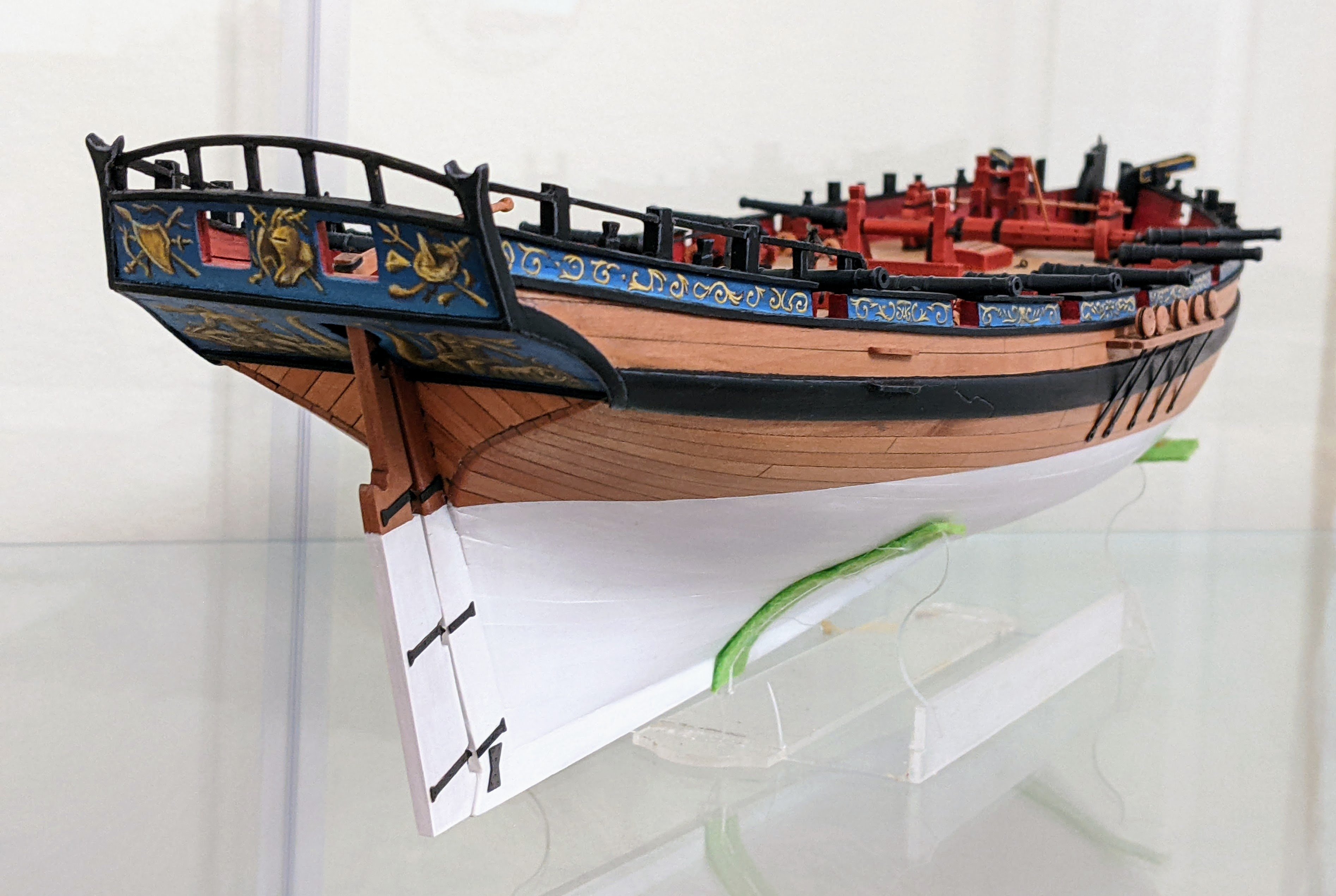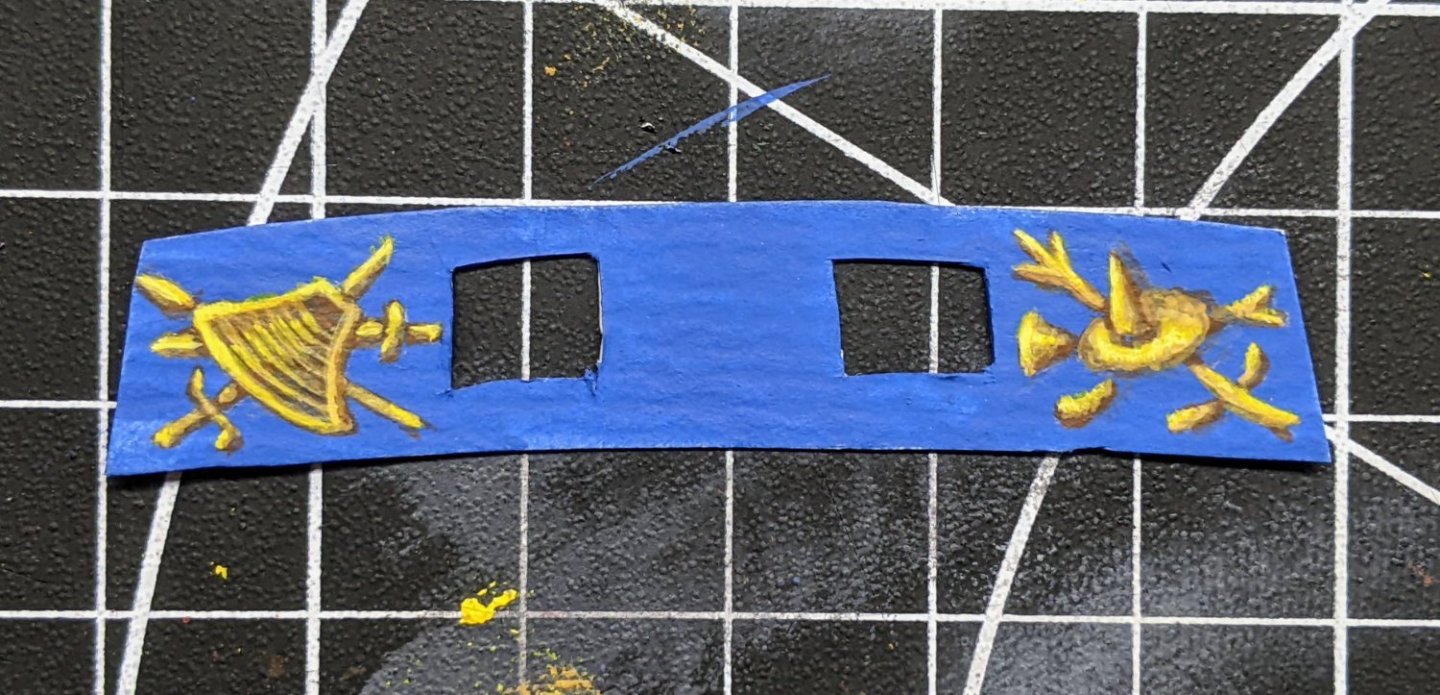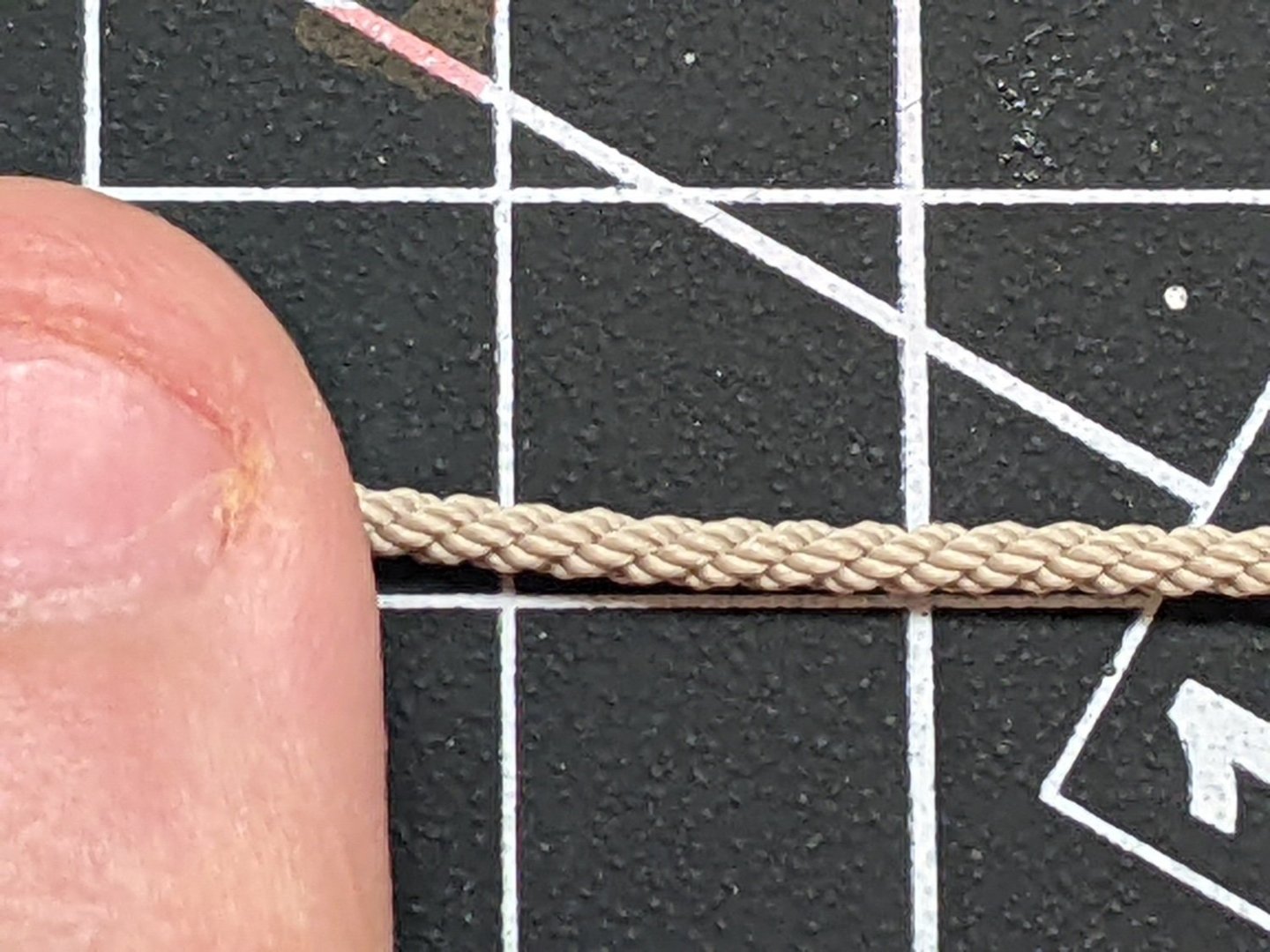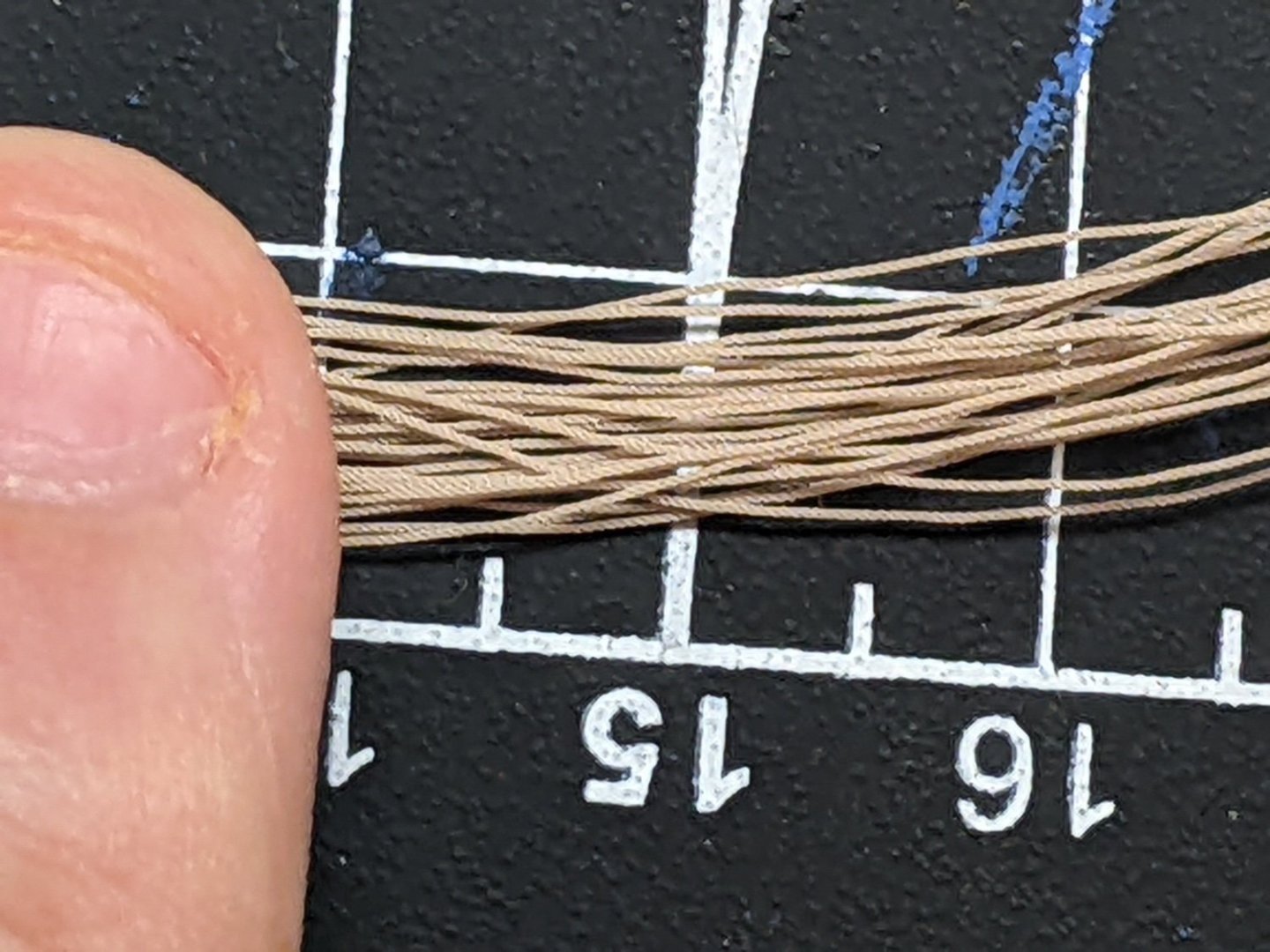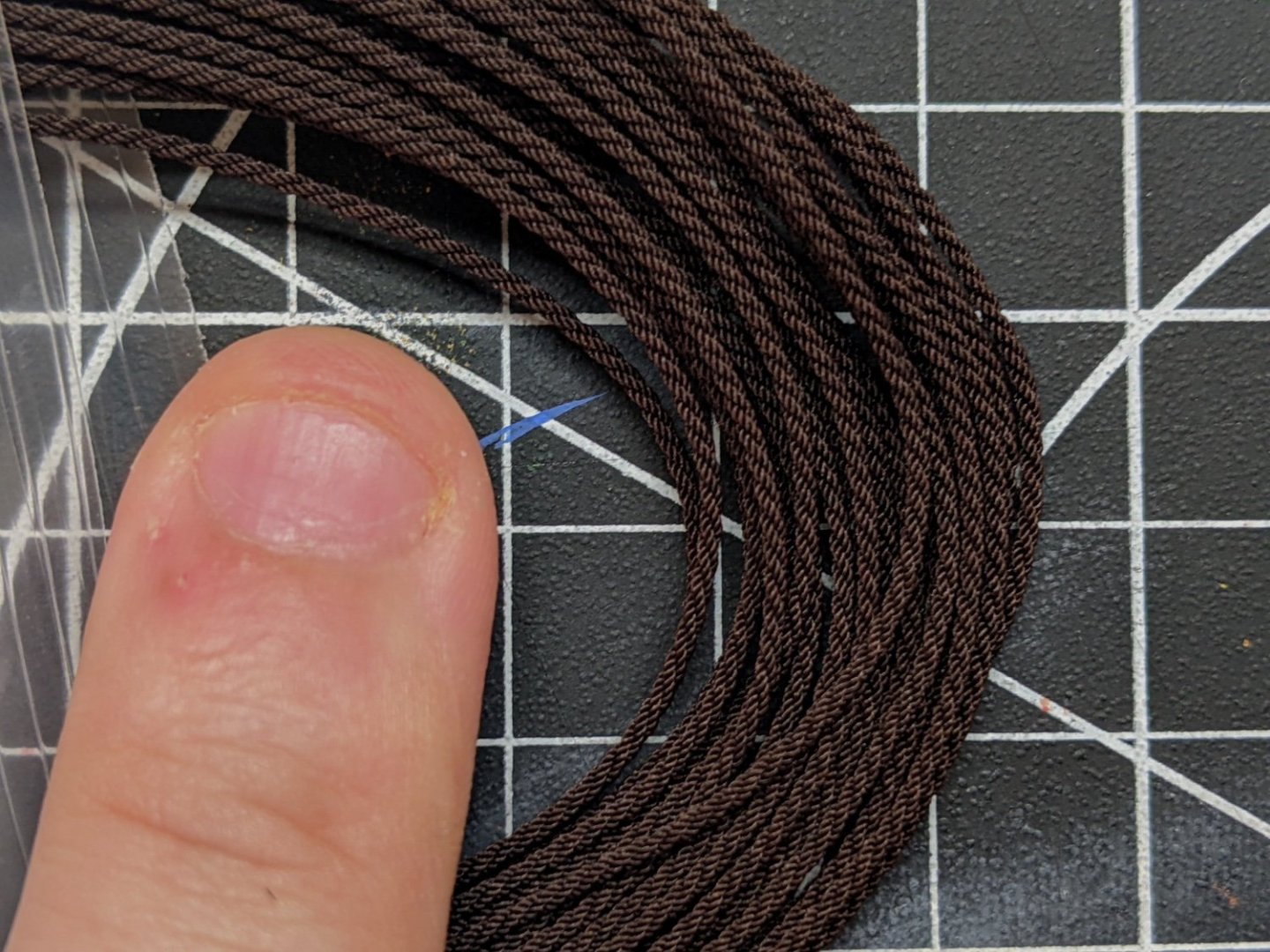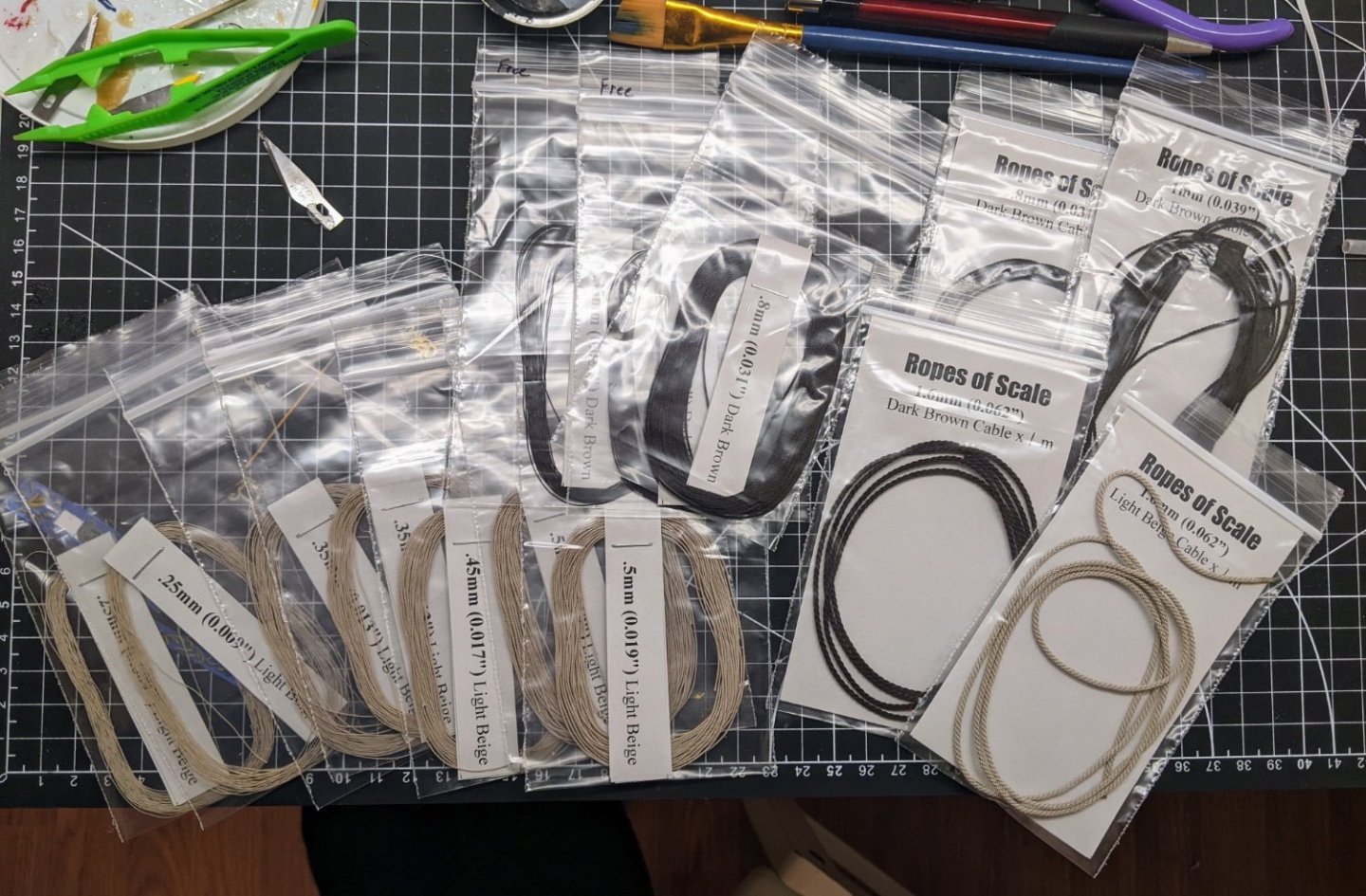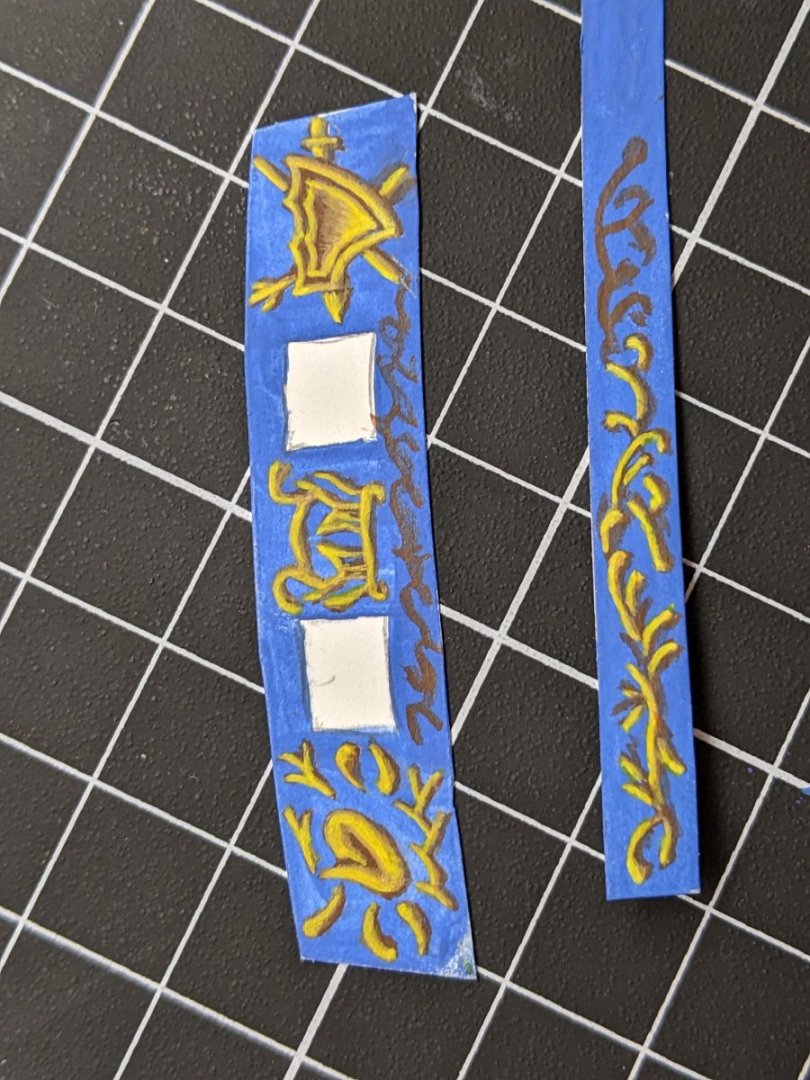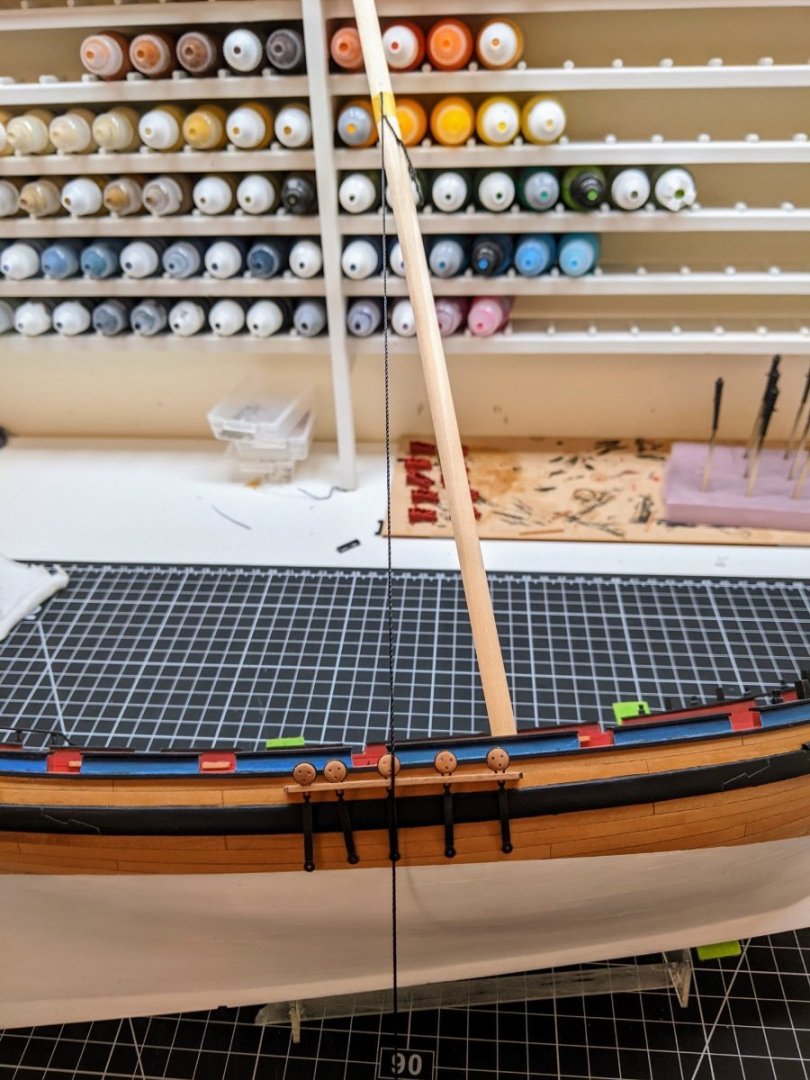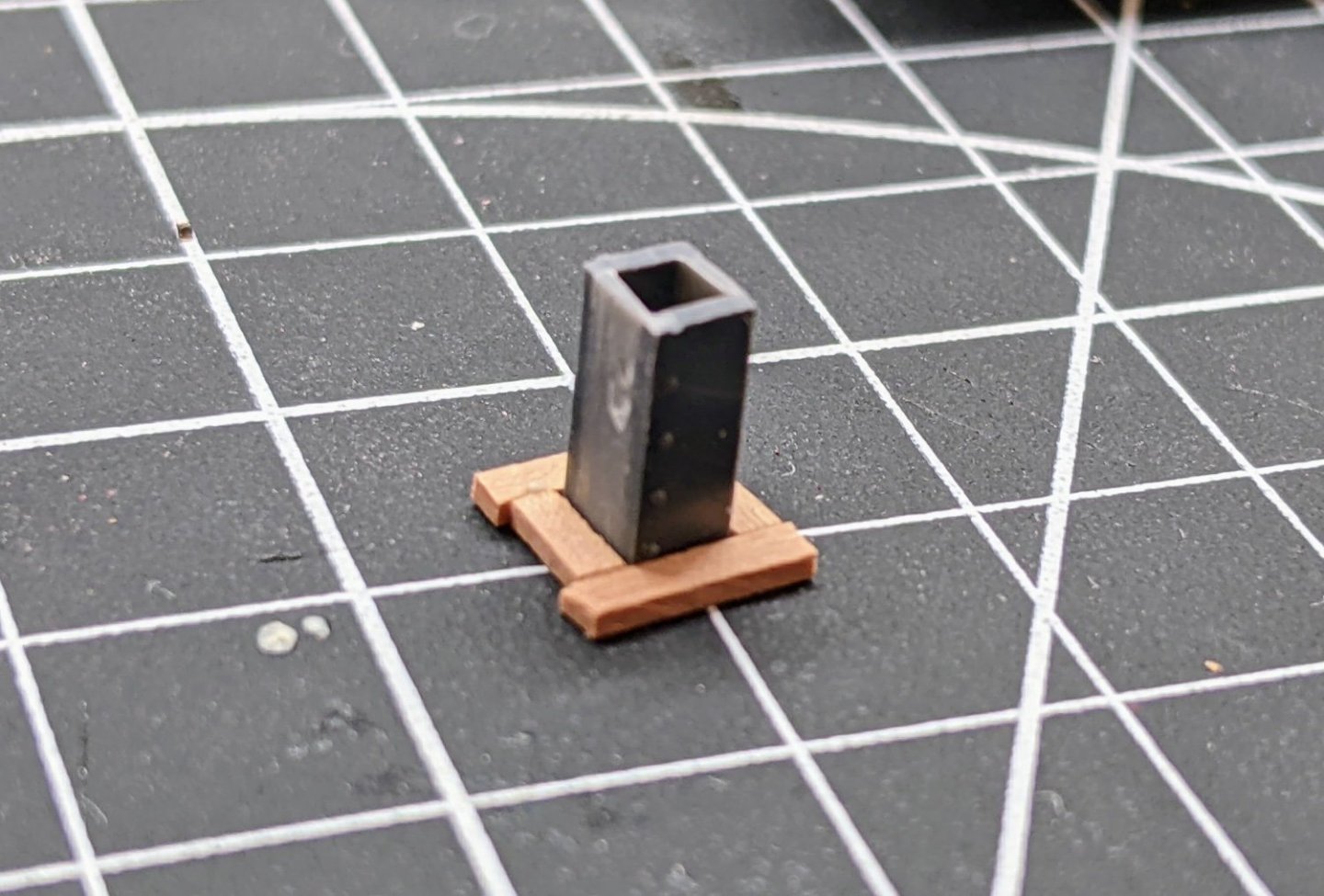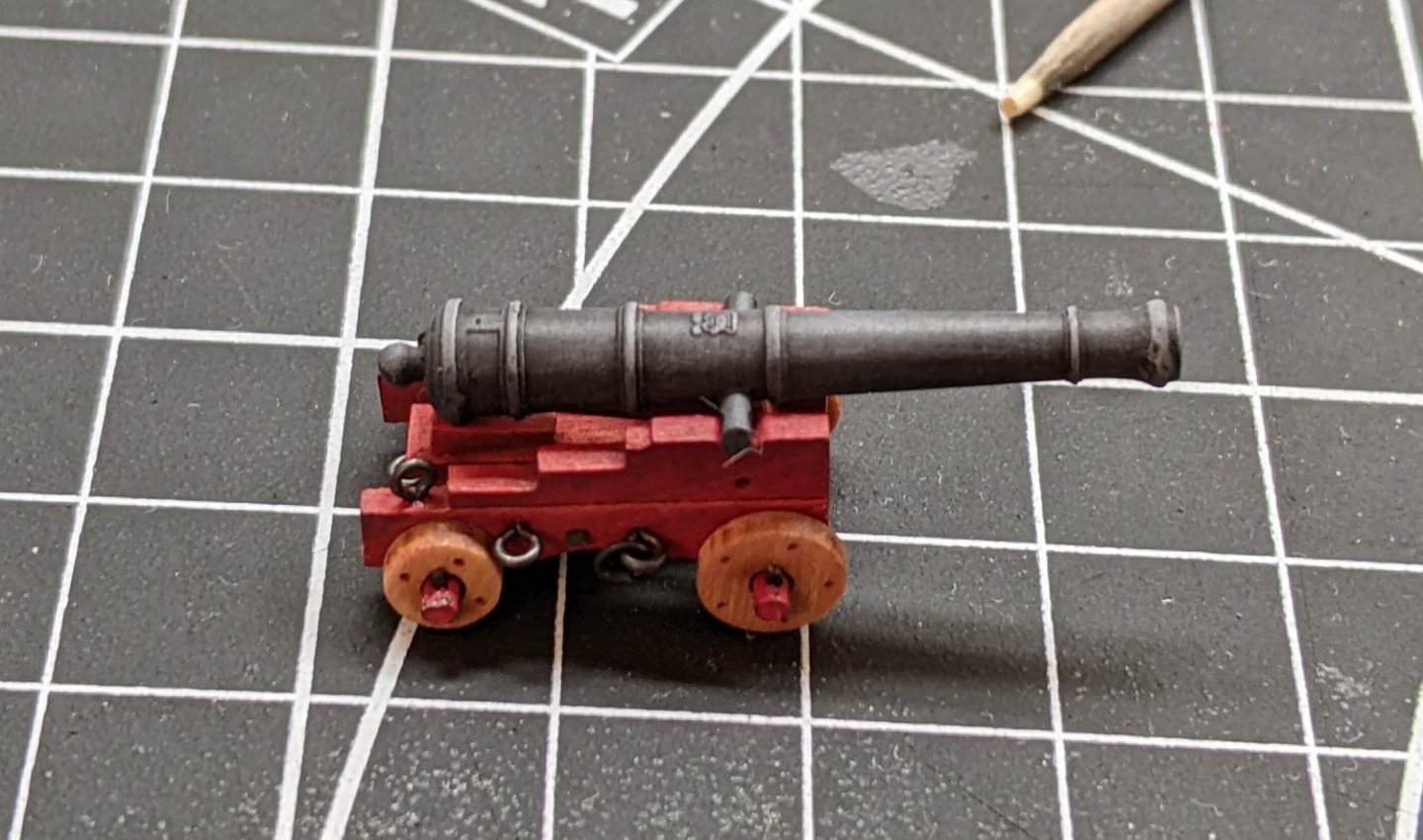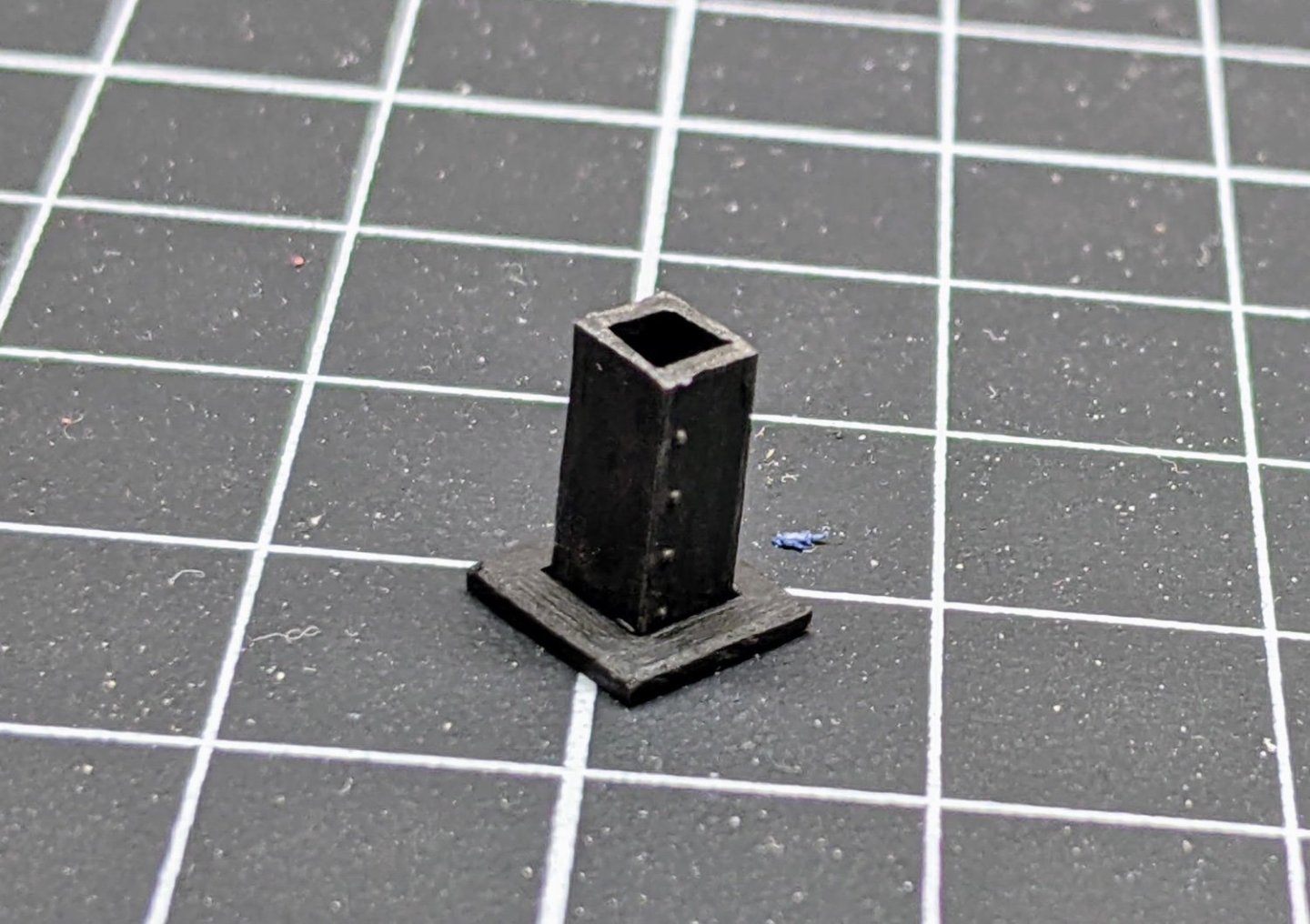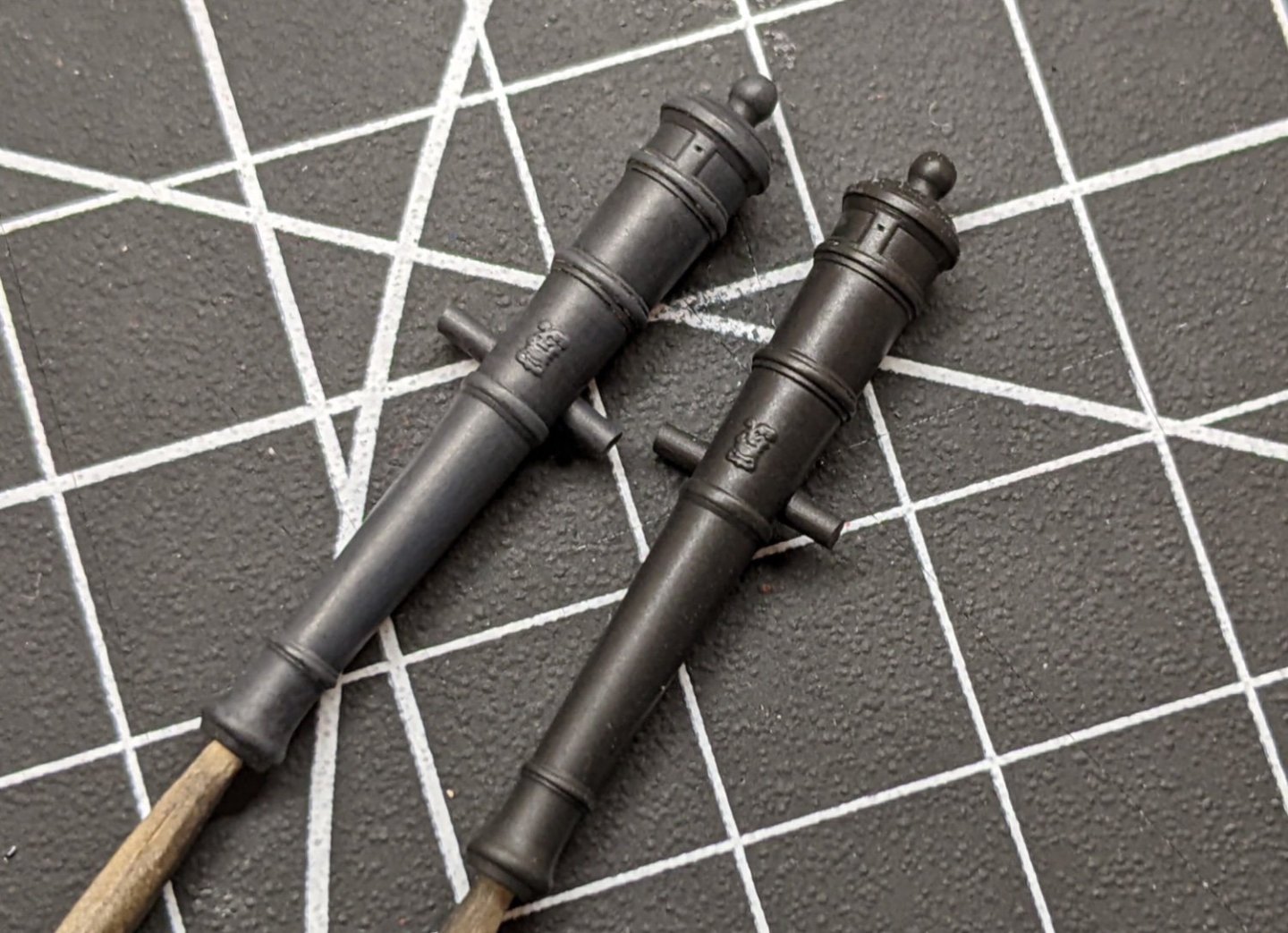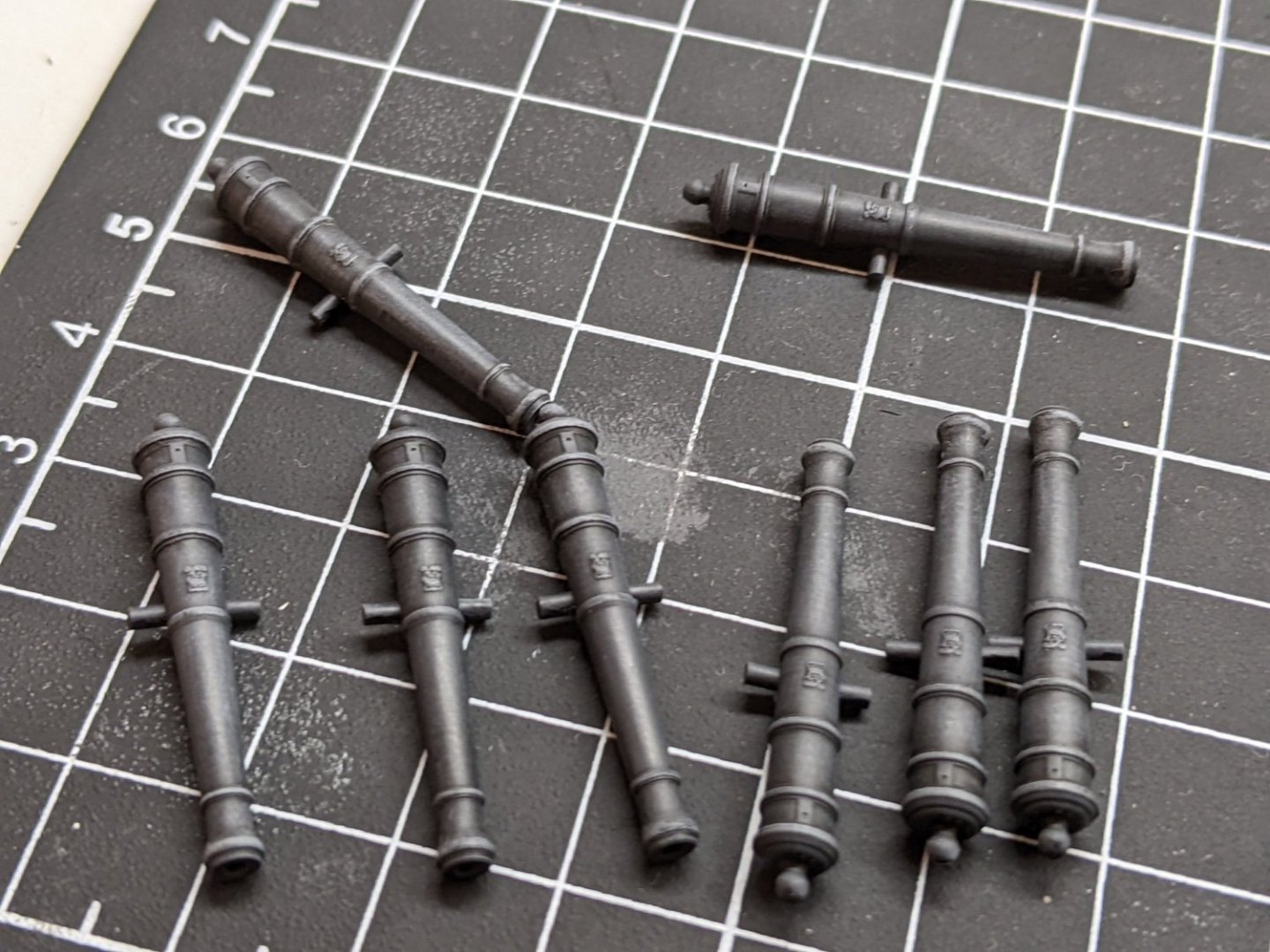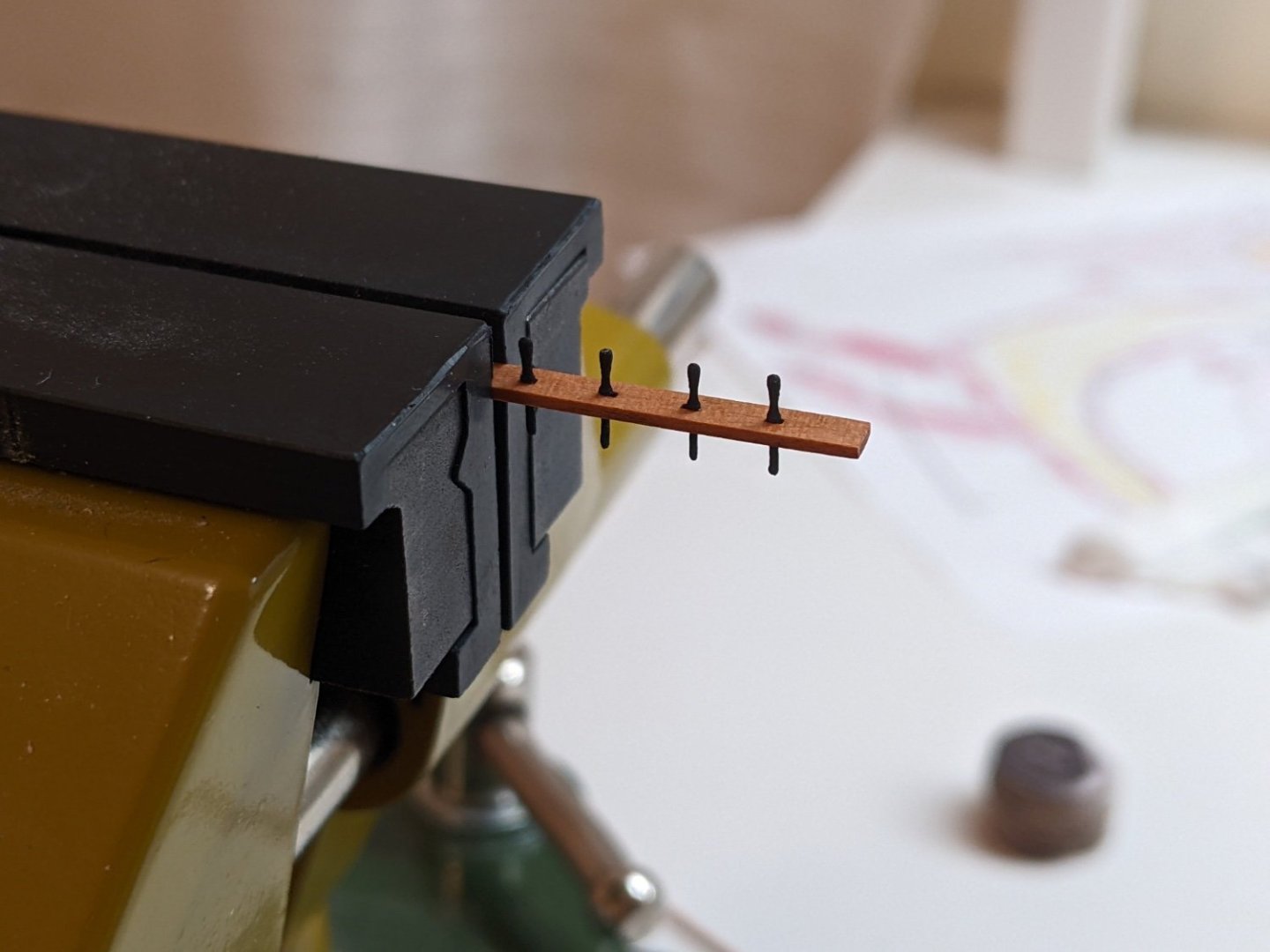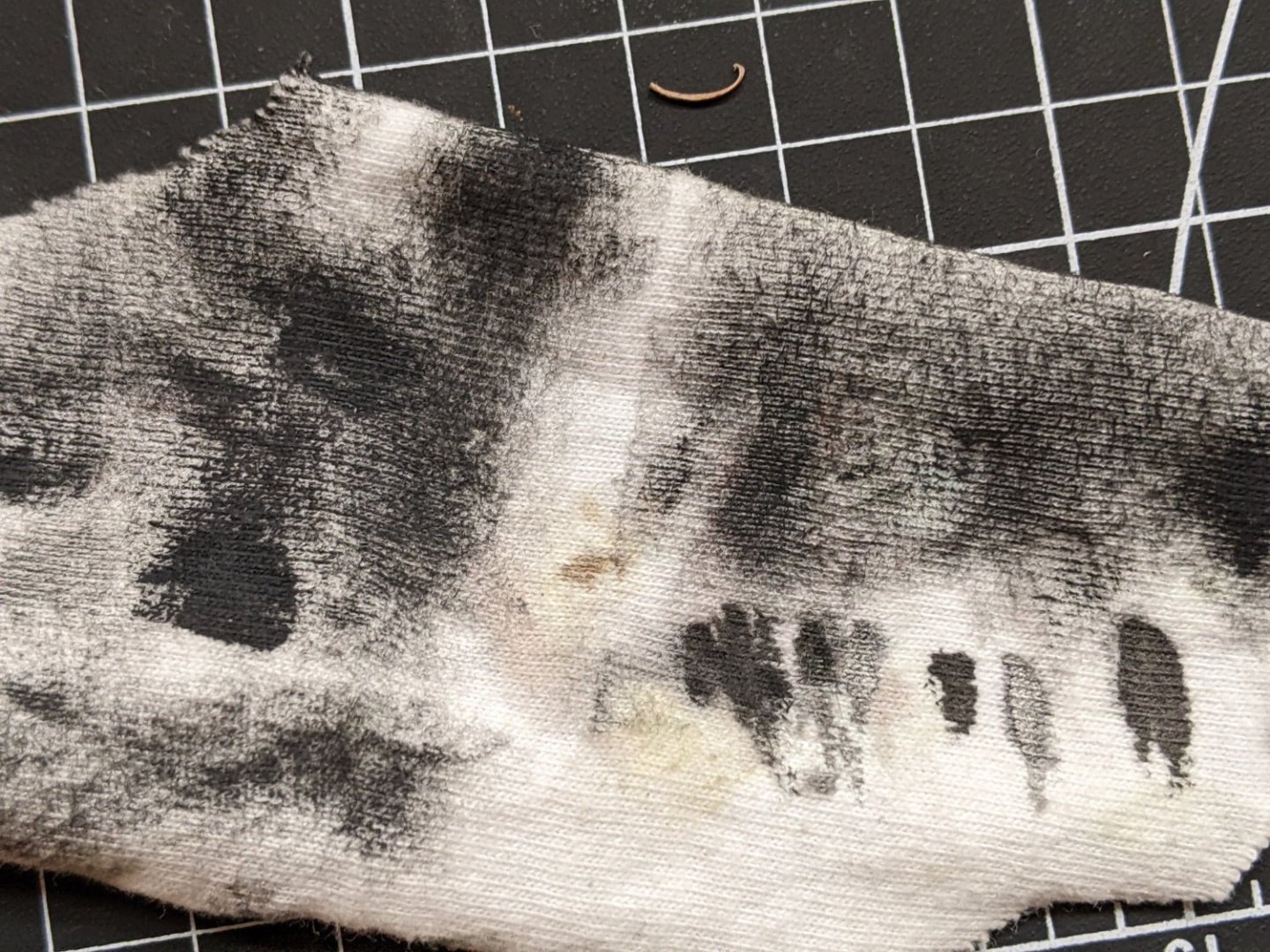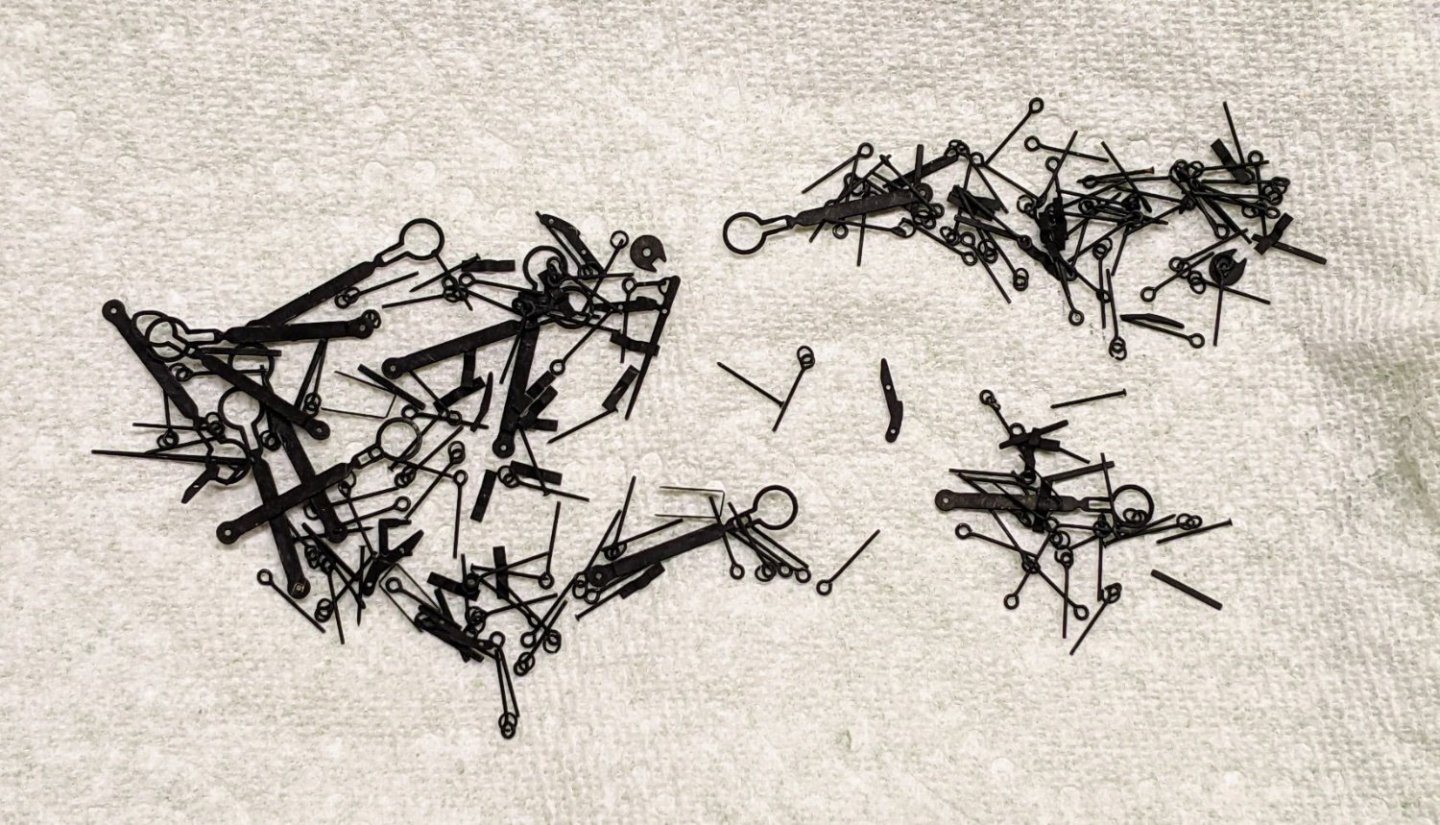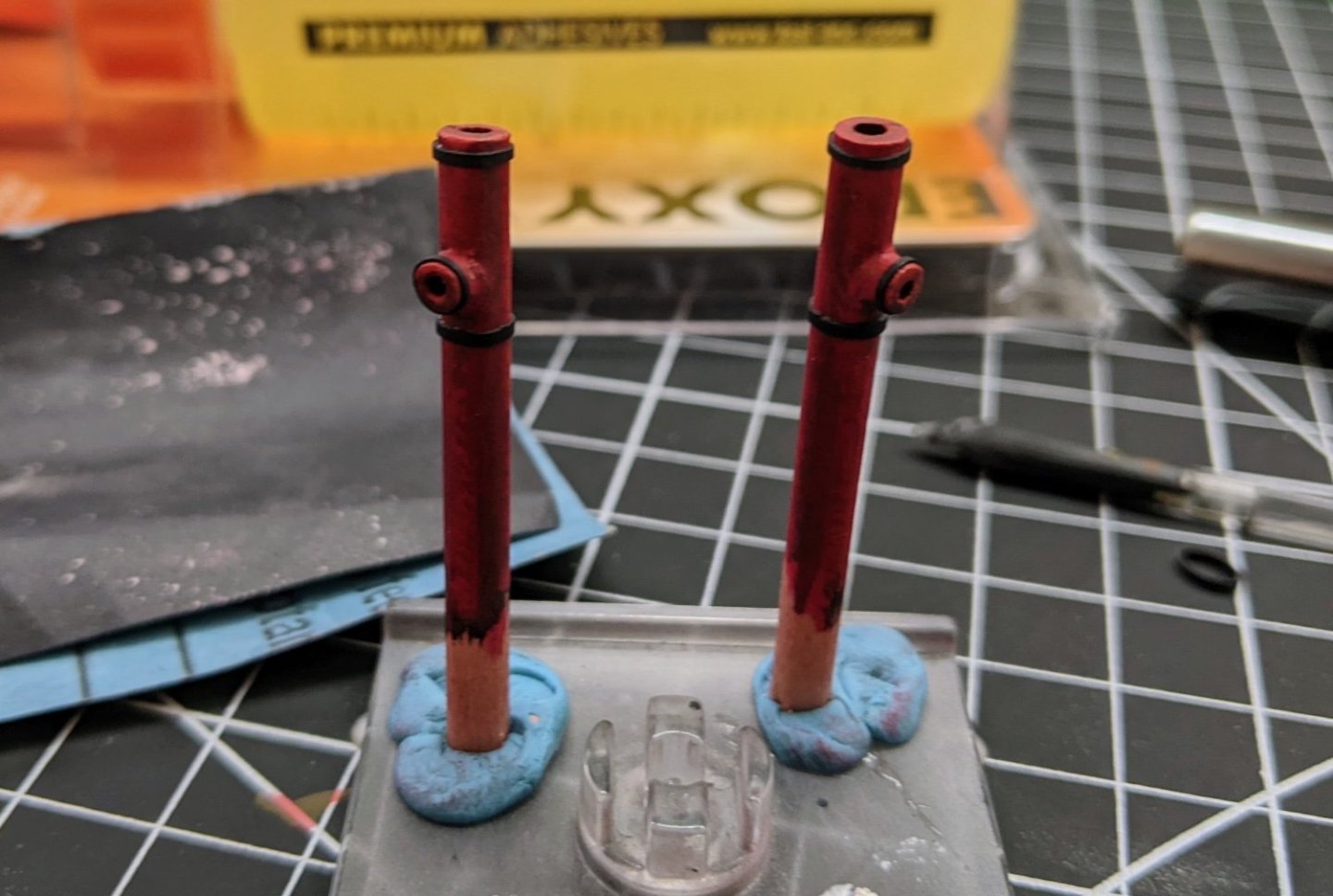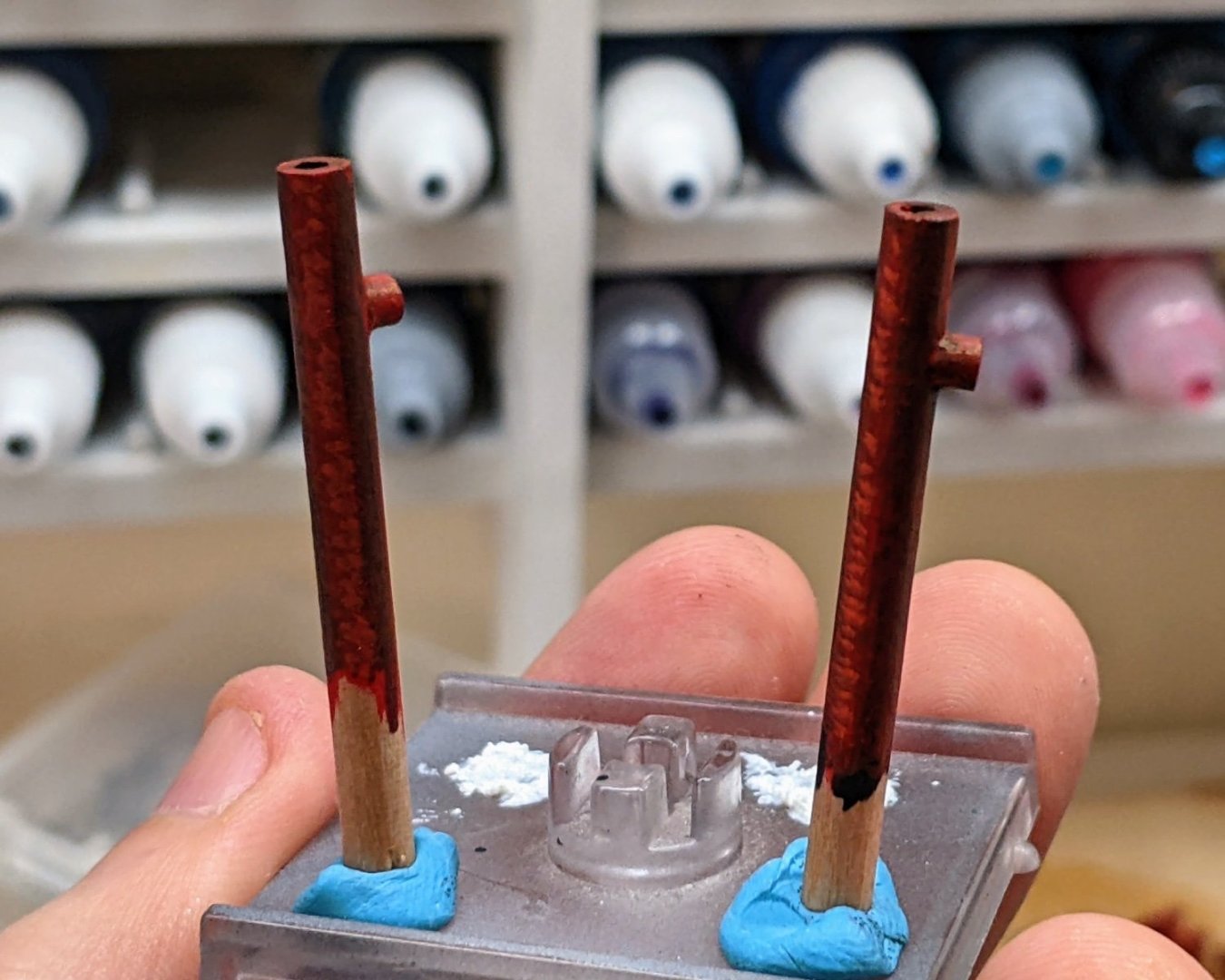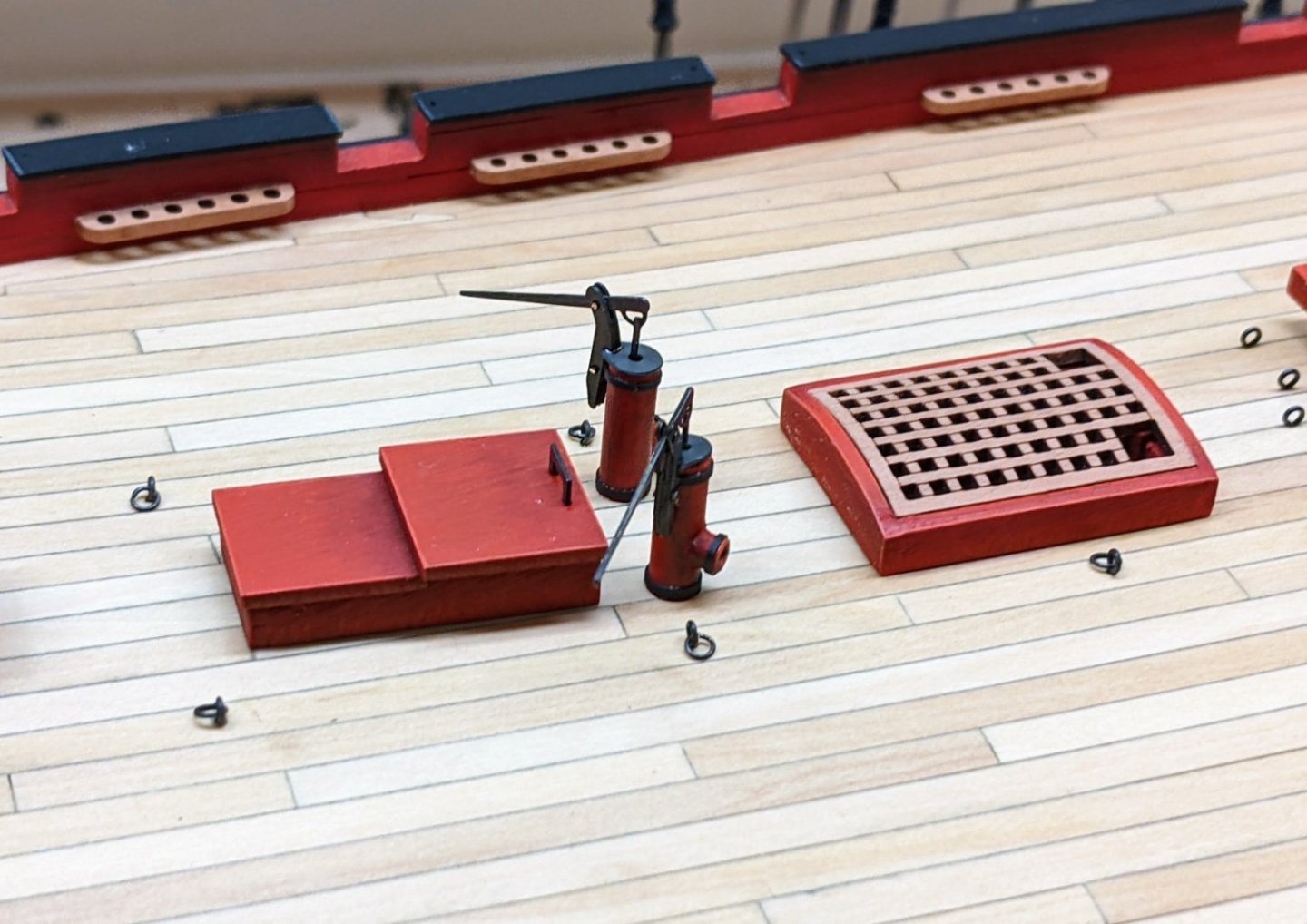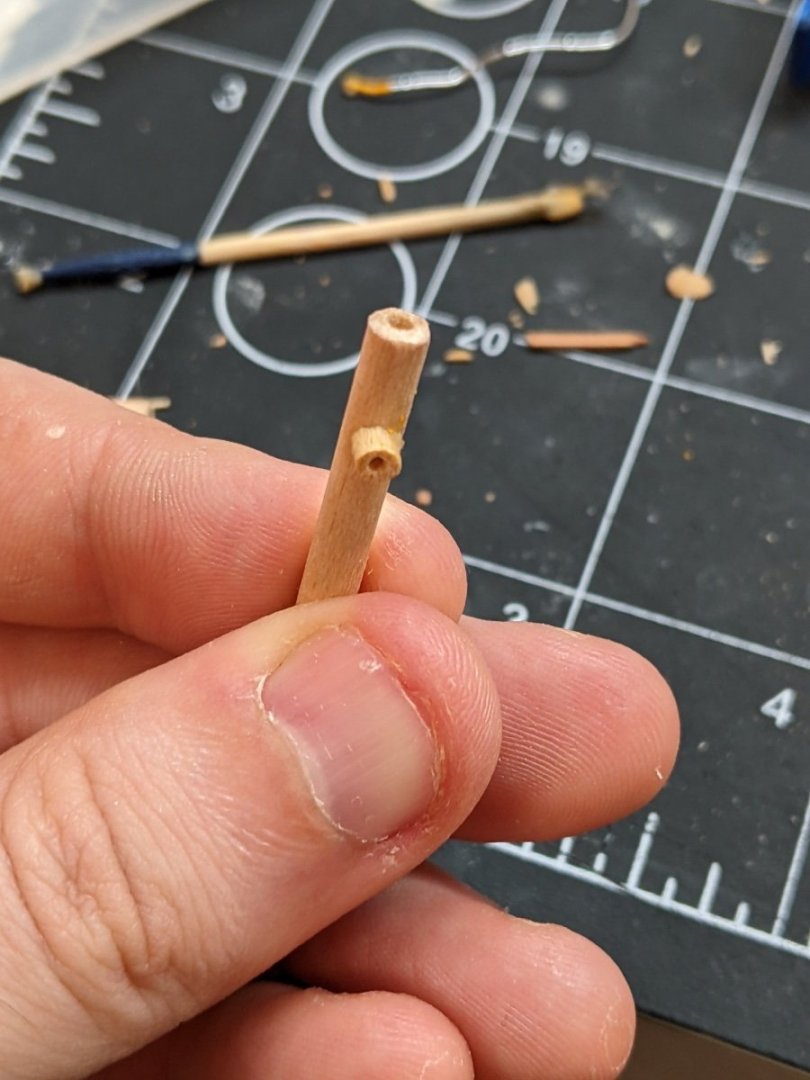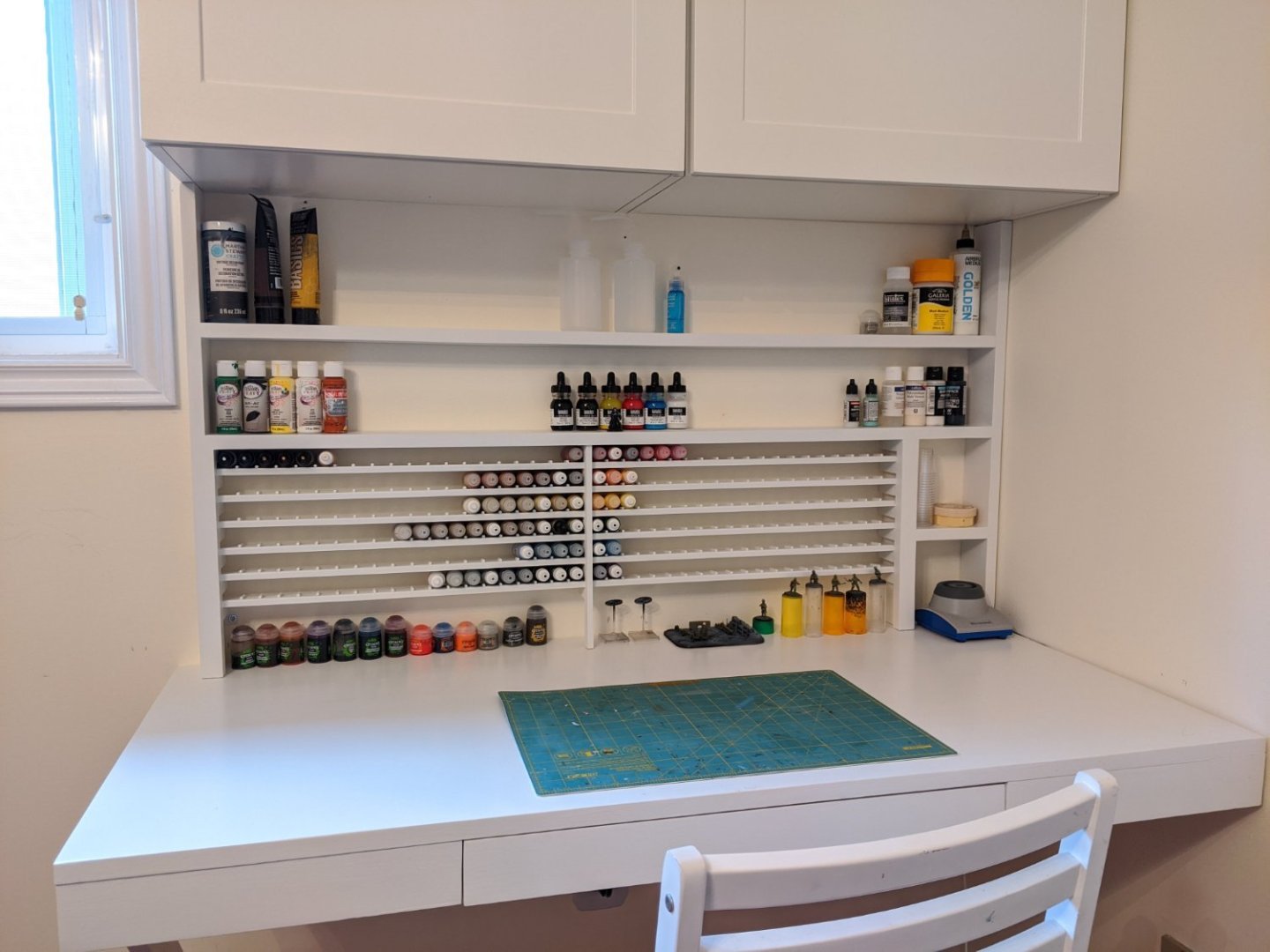-
Posts
1,345 -
Joined
-
Last visited
Content Type
Profiles
Forums
Gallery
Events
Everything posted by Thukydides
-
The gun ports are a bit fiddly and as you discovered it is easy to cut a bit too far or at the wrong angle. Remember they are perpendicular to the keele. I didn’t realize this when i was doing mine and so one or two of them don’t look quite right.
- 59 replies
-
- Alert
- Vanguard Models
-
(and 1 more)
Tagged with:
-
Good to see you back at it. I also had a period where I made very little progress due to a combination of lack of inspiration and no free time. The planking looks great, you are now getting to the stage where it starts to actually look like a ship 🙂.
- 59 replies
-
- Alert
- Vanguard Models
-
(and 1 more)
Tagged with:
-
where did you get this drill press? How accurate do you find it to be? i am always on the lookout for small tools as i don’t have the space for many of the toys that are usually recommended by people.
- 122 replies
-
- Artesania Latina
- Pen Duick
-
(and 1 more)
Tagged with:
-
Looks fantastic. It has been quite interesting to see how your designs have matured over time.
- 57 replies
-
- Trial
- Vanguard Models
-
(and 1 more)
Tagged with:
-
Thanks so much, You are right it is a helmet and that may be a jousting lance going through it diagonally. The one on the right is the strangest one as you may be right it is an ottoman shield, but that is a big spike.
- 562 replies
-
- vanguard models
- alert
-
(and 2 more)
Tagged with:
-
Welcome to MSW, make sure you start a build log. I have found it a great help as a first time builder, especially when I hit problems I wasn't sure how to solve.
-
Here is attempt number 2. I think I am getting closer, but even with the higher resolution photo, it is hard to tell what exactly the art on the transom is depicting. Part of my problem is my transom is not exactly the same shape as the one in the painting so I can't just do an exact 1 to 1. And I have no idea what the middle is meant to be where the port is partially covering it. Maybe a few more practice versions...
- 562 replies
-
- vanguard models
- alert
-
(and 2 more)
Tagged with:
-
Log #36: Rope While I was pondering painting a package arrived in the mail. I ordered a bunch of rope from @BenD and it looks even better in person than in the pictures. The cable laid rope is particularly nice looking and I think it is really going to enhance the model. I would highly recommend the rope to anyone who is interested in adding just that little bit of extra realism to their model. I had reached out to Ben to ask if he could do some additional sizes of cable (I had been looking for some smaller diameters than he offered on his website) and he was super helpful and made me cable in the requested sizes. He also threw in a few extras for free :). See below for some examples with my finger for scale: 1.6mm cable for the anchor 0.25mm for rigging the cannons and many other tasks 1mm cable for the shrouds
- 562 replies
-
- vanguard models
- alert
-
(and 2 more)
Tagged with:
-
This is a really helpful post. I really appreciate you taking the time to detail all this. I had seen that picture, but the one you have linked is a higher resolution than the ones I had been looking at. This one is detailed enough I may be able to use it to copy. Thanks
- 562 replies
-
- vanguard models
- alert
-
(and 2 more)
Tagged with:
-
No I haven't gotten much, but it is a pretty specialized topic and so I wasn't expecting too much :). I was mostly looking for any contemporary examples of the painting style (with high resolution photos) people could point me towards to try and emulate (most of the models I find by googling either don't have this or they are taken too far back to see the details properly). Though if anyone who has experience painting frieze wants to chime in I am more than ready to take advice. I vaguely remember reading somewhere about doing it first on paper, the issue for me is the time to do that would have been much earlier in the process to try and avoid it looking like a piece of paper glued to the model. The idea of painting the frieze is more of a sudden thought of mine. Also I suspect it won't look as good as if you directly paint onto the model, there is a subtle different texture you get painting on paper. There is also the printing option (as Chuck did with the Winchelsea kit). My problem with this is though it looks very nice (better than just sticking on the PE that comes with the kit), I can always tell it was printed. I am still of two minds whether to attempt this. I may try a few more practice versions and if I am happy enough I will proceed. If not I can always leave things as they are. Part of this is being driven by my thoughts about what I might try after I get the alert done and I want to practice the techniques (and make as many of the mistakes as possible) on the current model.
- 562 replies
-
- vanguard models
- alert
-
(and 2 more)
Tagged with:
-
I have been considering whether or not to paint the frieze on the Alert. To this end I have been looking at the pictures of the contemporary model of the Winchelsea that Chuck uploaded to the site (link) as well as pictures of the Marshall alert painting (link) (though it is hard to find anything high enough resolution to really copy) and practicing on pieces of paper. I think I have managed to get the colour and depth down, but am struggling to get the patterns looking right. Does anyone who has experience painting frieze have any suggestions for examples I could look at / tips for getting the look right?
- 562 replies
-
- vanguard models
- alert
-
(and 2 more)
Tagged with:
-
Log #35: Cannons and Other Fittings Thank you everyone for stopping by and all the encouragement. I attached the deadeyes to the hull. I can’t remember which build log I saw this in, but in it they temporarily attached a piece of string to the mast at the correct height to get the right angle. Since that seemed a good method I copied it. I also received some wooden belaying pins from crafty sailor which are a bit more to scale than the PE ones in the kit. I painted them black as I felt that produced the best contrast. I also decided I would depart from the kit arrangement for the stove pipe. Using some random pieces of plastic from my bits box I was able to construct something roughly the scale depicted in Goodwin. Conveniently I found some pieces that had rivets on them (I think from a tank armour plate or something like that) and was able to use them to match up with the drawings in Goodwin. I also took some scrap pear to make a moulding around it. Once completed I painted it black and then for the stove pipe I edge highlighted with a dark metallic paint to give the illusion of metal. I also picked out the rivets with this colour. For the cannons I began by priming them black (I did this a few weeks ago in the massive painting session). I then did a heavy dry brush of vallejo german grey (a dark grey) from the top and the sides. Dry brushing is a great technique for cannons as it produces a rough finish which allows us to somewhat simulate the uneven surface of a cast iron cannon. If you are interested in the technique I would recommend looking it up on youtube (there are many videos on the subject). However I will describe the process briefly. First I take a small makeup brush (I just get them at the dollar store) and stick it in the paint filling up the brush. It is important that you do not wet the brush first. Then take an old tshirt and brush until very little comes off the brush. We then with a light quick motion brush on the cannon. You can see the effect of this below: Notice how the recesses stay black while the exposed surfaces pick up the colour. I then proceeded to do two more dry brush layers. The first with a medium grey and then a final with a light grey covering less and less of the cannon each time. You have to be very careful as you use the lighter colours and really work to get the paint off the brush. Otherwise you will end up with too much paint on the cannon. The lightest colour should mostly be picking up the sharp upper edges. This is what they looked like once they were done and below you can see one of the cannons on a carriage.
- 562 replies
-
- vanguard models
- alert
-
(and 2 more)
Tagged with:
-
You might want to also add whatever finish you are doing before you commit to one method or another. The calling lines were much more visible for me after i added WOP than before. Personally I like the slightly more subtle look of the pencil lines.
- 122 replies
-
- Artesania Latina
- Pen Duick
-
(and 1 more)
Tagged with:
-
Looking good. You are doing great with the log. I feel you on this. I also don't really have a dedicated space I can do messy things. There are certain tasks I have to do outside because of the mess they create or in the case of airbrushing I need to wait till everyone is in bed so I can use the kitchen so they don't go running around breathing in the paint dust.
- 122 replies
-
- Artesania Latina
- Pen Duick
-
(and 1 more)
Tagged with:
-
Thanks, I had considered doing what BE did and making the proper hexagonal shape, but I decided these would look good enough. Like much of this build it is a bit of a compromise between the kit instructions and my research. I am mostly just trying to push myself and build the skills for the next kit I do when I will likely pursue more of a "no compromises" approach. I still have lots of future mistakes to learn from :).
- 562 replies
-
- vanguard models
- alert
-
(and 2 more)
Tagged with:
-
Welcome, I also came from a plastic modeling background. Some of the skills will translate and others will not but as everyone else has suggested look around, pick something small to start with and you will do great.
-
Log #34: The Pumps I know I promised my next log would discuss the cannons, but I got distracted with a bit of a side project. In preparation for work on the cannons I had done a large blackening session. I decided to play around with the pumps as I figured I could add a little more detail. First I cut a small piece of one of the smaller dowels and glued it to the side of the main dowel. I then drilled holes to simulate the spouts. To avoid the dowel splitting I drilled small holes and then slowly increased the size by drilling with progressively larger bits. The painting process then proceeded as I have detailed in previous logs. You can see below what they looked like after I had blocked in the main highlights. Once the painting was finished I used shrink tube to simulate the iron bands that Goodwin depicts in his book on Alert. Finally I attached the PE and you can see below what they look like on the deck.
- 562 replies
-
- vanguard models
- alert
-
(and 2 more)
Tagged with:
-
The run of the planks looks good so I think if you fill in a few of the gaps with sawdust as BE suggested and then sand it down so it is level it will look great.
- 587 replies
-
- Indefatigable
- Vanguard Models
-
(and 1 more)
Tagged with:
-
Great to see you starting a log. I will be following along. I don't work in a closet, but my space looks very similar as it is in a corner of our bedroom. This is the issue when there is no spare space in the house. I have to keep my desk clean though or my wife gets mad because it makes the bedroom look untidy. This is a bit of an older picture, but it hasn't changed much apart from the shelves getting filled up and me getting a bigger cutting mat.
- 122 replies
-
- Artesania Latina
- Pen Duick
-
(and 1 more)
Tagged with:
About us
Modelshipworld - Advancing Ship Modeling through Research
SSL Secured
Your security is important for us so this Website is SSL-Secured
NRG Mailing Address
Nautical Research Guild
237 South Lincoln Street
Westmont IL, 60559-1917
Model Ship World ® and the MSW logo are Registered Trademarks, and belong to the Nautical Research Guild (United States Patent and Trademark Office: No. 6,929,264 & No. 6,929,274, registered Dec. 20, 2022)
Helpful Links
About the NRG
If you enjoy building ship models that are historically accurate as well as beautiful, then The Nautical Research Guild (NRG) is just right for you.
The Guild is a non-profit educational organization whose mission is to “Advance Ship Modeling Through Research”. We provide support to our members in their efforts to raise the quality of their model ships.
The Nautical Research Guild has published our world-renowned quarterly magazine, The Nautical Research Journal, since 1955. The pages of the Journal are full of articles by accomplished ship modelers who show you how they create those exquisite details on their models, and by maritime historians who show you the correct details to build. The Journal is available in both print and digital editions. Go to the NRG web site (www.thenrg.org) to download a complimentary digital copy of the Journal. The NRG also publishes plan sets, books and compilations of back issues of the Journal and the former Ships in Scale and Model Ship Builder magazines.

